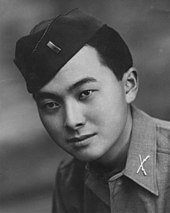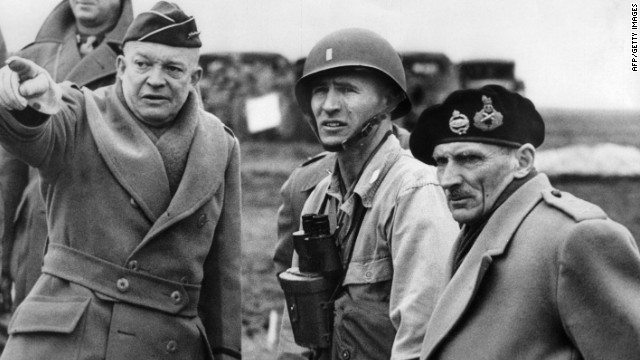I think this was taken at 'Shinders' on Hennepin ave...June 6, 1944
Click for larger version:
Link to 100+ D-Day newspapers:
https://www.google.com/search?newwindow ... B900%3B692
June 6, 1944
Forum rules
Do NOT post the full text of published articles. If you would like to discuss a news story please link to it and, at most, include a brief summary of the article.
Do NOT post the full text of published articles. If you would like to discuss a news story please link to it and, at most, include a brief summary of the article.
16 posts • Page 1 of 2 • 1, 2
Re: June 6, 1944
It is my dad's 70th birthday tomorrow. The oldest in a family of 5, he was born while grandpa was on a navy ship (in the pacific).
Re: June 6, 1944
Somewhere in my father's personal effects is a note he wrote home to my grandmother on 6 June 1944. He was in the 135th regiment of the 34th Infantry- the Minnesota Red Bulls, one of the first in, and longest serving bunch in WWII. They had entered Rome the day before, and he makes mention of that in the note, as well as they just got word of ..."an invasion of France....and word was the war would soon be over..."
Something I learned while cleaning out my maternal grandfather's farmhouse a few years ago- my mother was engaged to a GI who was killed in the invasion.
Three good friends of mine fathers were in the invasion, one a airborne paratrooper, another landed in a glider, the third, a Marine, waded ashore behind a bulldozer employed to clear a path through the bodies that were washing up in the surf.
Another gent I had the privilege of speaking with was a P-51 pilot, who watched his wingman disappear in a ball of fire as they strafed the enemy positions.
Something I learned while cleaning out my maternal grandfather's farmhouse a few years ago- my mother was engaged to a GI who was killed in the invasion.
Three good friends of mine fathers were in the invasion, one a airborne paratrooper, another landed in a glider, the third, a Marine, waded ashore behind a bulldozer employed to clear a path through the bodies that were washing up in the surf.
Another gent I had the privilege of speaking with was a P-51 pilot, who watched his wingman disappear in a ball of fire as they strafed the enemy positions.
Re: June 6, 1944
My Dad went in on the third day with the big artillery, never spoke much about the war except for the dead bodies on the beach and the stench of decomposing bodies everywhere. His unit saw some tough times with Panzer breakthroughs going after his six gun units. The guns wouldn't depress enough for point blank so more innovative methods were used to lower barrel and raise hitch end of gun selected.
He often said that with two rounds, he could put the second thru the roof of the school gymnasium which was 13 land miles from home. He was tasked with the math calculations after talking to Forward Observers.
The Big One, The War to End All Wars, if only that were true.
My older uncle, Dad's brother, flew in B-17's over Europe developing the Norden Bombsight. He must have been a sight to see in such a "small" plane for his 7'2" height.
He often said that with two rounds, he could put the second thru the roof of the school gymnasium which was 13 land miles from home. He was tasked with the math calculations after talking to Forward Observers.
The Big One, The War to End All Wars, if only that were true.
My older uncle, Dad's brother, flew in B-17's over Europe developing the Norden Bombsight. He must have been a sight to see in such a "small" plane for his 7'2" height.
- OldmanFCSA
- Posts: 3240 [View]
- Joined: Sat Sep 24, 2011 9:55 pm
- Location: Osceola, WI.
June 6, 1944
Cool stories. Greatest generation, for sure.
-

Ron Burgundy - Posts: 981 [View]
- Joined: Wed Mar 16, 2011 7:28 pm
Re: June 6, 1944
Mn01r6 wrote:It is my dad's 70th birthday tomorrow. The oldest in a family of 5, he was born while grandpa was on a navy ship (in the pacific).
My mother turns 70 on this D-day, too.
By then, the USS Monticello had dropped my grandfather off in New Guinea where he started island hopping his way towards Manila.
Yeah, but I shoot with THIS hand.
Re: June 6, 1944
My great uncle swam to France on D-Day.
He was a motormouth, an excellent storyteller, funny as hell, but he didn't talk about his war.
Thank You Very Much, and Rest in Peace Sonny.
He was a motormouth, an excellent storyteller, funny as hell, but he didn't talk about his war.
Thank You Very Much, and Rest in Peace Sonny.
A fight for liberty somewhere, is a fight for liberty everywhere.
-

SparkyJeff - Posts: 1621 [View]
- Joined: Sun Apr 04, 2010 8:59 pm
Re: June 6, 1944

http://en.wikipedia.org/wiki/Daniel_Inouye
During the Japanese attack on Pearl Harbor in 1941, Inouye served as a medical volunteer.[9]
In 1943, when the U.S. Army dropped its enlistment ban on Japanese Americans, Inouye curtailed his premedical studies at the University of Hawaii and enlisted in the Army.[9] He volunteered to be part of the all-Nisei 442nd Regimental Combat Team.[10] This army unit was mostly made up of second-generation Japanese Americans from Hawaii and the mainland.[11]....On April 21, 1945, Inouye was grievously wounded while leading an assault on a heavily-defended ridge near San Terenzo in Tuscany, Italy, called Colle Musatello. The ridge served as a strongpoint along the strip of German fortifications known as the Gothic Line, which represented the last and most unyielding line of German defensive works in Italy. As he led his platoon in a flanking maneuver, three German machine guns opened fire from covered positions just 40 yards away, pinning his men to the ground. Inouye stood up to attack and was shot in the stomach; ignoring his wound, he proceeded to attack and destroy the first machine gun nest with hand grenades and fire from his Thompson submachine gun. After being informed of the severity of his wound by his platoon sergeant, he refused treatment and rallied his men for an attack on the second machine gun position, which he also successfully destroyed before collapsing from blood loss.[1.....Although Inouye had lost his right arm, he remained in the military until 1947 and was honorably discharged with the rank of captain. At the time of his leaving the Army, he was a recipient of the Bronze Star Medal and the Purple Heart. Inouye was initially awarded the Distinguished Service Cross for his bravery in this action, with the award later being upgraded to the Medal of Honor by President Bill Clinton (alongside 19 other Nisei servicemen who served in the 442nd Regimental Combat Team and were believed to have been denied proper recognition of their bravery due to their race
My dad was in one of the longest deployed units in the European theatre of WWII, He spoke very little of the war and it's horror. But many times he would recall crossing paths with Inouye and his Japanese soldiers. He had the highest regard for them and called Inouye a hero.
Re: June 6, 1944
That all Japanese group served in the European Theatre. My Italian uncles served in the Pacific...had they landed at Anzio (where Bob Dole got shot up) it would have been a short hike to their Grandfathers home.
I don't know if any Germans were interred in America but some Italians were.
I don't know if any Germans were interred in America but some Italians were.
Re: June 6, 1944
I like the creativity of this After / Before shot.
They look British because of the Moustache of the guy on the right....there's a dozen old guys on the left...I'll bet there are at least a dozen artificial knees / hips between them.
These veteran paratroopers reunited in the Dakota plane they flew in on that day. Bravery personified.
They look British because of the Moustache of the guy on the right....there's a dozen old guys on the left...I'll bet there are at least a dozen artificial knees / hips between them.
Re: June 6, 1944
XD Ed: I was surprised that you knew a Marine who followed a bulldozer ashore to clear a path through the bodies. Sounds like a typical Marine's BS.
No Marines were involved in the Invasion of Normandy. And, while 1,465 US soldiers died on Omaha and Utah beaches, there would never have been a need to use a bulldozer to clear a path through the bodies, nor would the order been given to do so.
Ike was extremely aware of the Marine Corps Public relations machine during the war. He was adamant that no Marines would take part in the Invasion, including observers. Marine detachments on the battleships USS Arkansas, USS Texas and USS Nevada were strictly prohibited from leaving those ships. The only contact Marines had with the Germans during the invasion was on the USS Texas when German POWs were delivered from Point du Hoc on June 7th. For more info about the "No Marines in Normandy", read My Three Years With Eisenhower: The Personal Diary of Captain Harry C. Butcher, USNR, Naval Aide to General Eisenhower.
I am not saying you are full of BS, but the Marine who told you he was there was feeding you a line.
No Marines were involved in the Invasion of Normandy. And, while 1,465 US soldiers died on Omaha and Utah beaches, there would never have been a need to use a bulldozer to clear a path through the bodies, nor would the order been given to do so.
Ike was extremely aware of the Marine Corps Public relations machine during the war. He was adamant that no Marines would take part in the Invasion, including observers. Marine detachments on the battleships USS Arkansas, USS Texas and USS Nevada were strictly prohibited from leaving those ships. The only contact Marines had with the Germans during the invasion was on the USS Texas when German POWs were delivered from Point du Hoc on June 7th. For more info about the "No Marines in Normandy", read My Three Years With Eisenhower: The Personal Diary of Captain Harry C. Butcher, USNR, Naval Aide to General Eisenhower.
I am not saying you are full of BS, but the Marine who told you he was there was feeding you a line.
Eleven-Bravo, 1/4 INF, 3ID
June 6, 1944
minnhawk wrote:XD Ed: I was surprised that you knew a Marine who followed a bulldozer ashore to clear a path through the bodies. Sounds like a typical Marine's BS.
No Marines were involved in the Invasion of Normandy. And, while 1,465 US soldiers died on Omaha and Utah beaches, there would never have been a need to use a bulldozer to clear a path through the bodies, nor would the order been given to do so.
Ike was extremely aware of the Marine Corps Public relations machine during the war. He was adamant that no Marines would take part in the Invasion, including observers. Marine detachments on the battleships USS Arkansas, USS Texas and USS Nevada were strictly prohibited from leaving those ships. The only contact Marines had with the Germans during the invasion was on the USS Texas when German POWs were delivered from Point du Hoc on June 7th. For more info about the "No Marines in Normandy", read My Three Years With Eisenhower: The Personal Diary of Captain Harry C. Butcher, USNR, Naval Aide to General Eisenhower.
I am not saying you are full of BS, but the Marine who told you he was there was feeding you a line.
The Marine I referred to was the father of a good friend. Of the three men, he was the one i did not know personally He had passed before I would have met him. The conversation I had with my friend took place after 'SAVING PRIVATE RYAN' debuted. Remarks were made that in spite of the movie's gore, reality was worse. I am certain from other conversations that his dad was a Marine during the war. But as I think back, he mentioned some stuff from the Pacific theatre as well. The visual memory I am left with is the cutting of trenches for cover and access. If that is not an accurate recollection, feel free to blame my aging memory, or misunderstood communications between my friend and I. But from stories I heard about this guy's dad, like most of my generation's fathers, he went through some crazy **** that for several years caused his dad to wake up screaming in the middle of the night.
I appreciate your corrections. When you say Ike was aware of the Marines' PR machine- please elaborate; was this an inter-service rivalry thing?
Re: June 6, 1944
I don't get it...The Marine is the 'Soldier from the Sea' any reason to not use that asset in the turning point of the war?
OK answered my own question:
https://www.google.com/?gws_rd=ssl#neww ... y&safe=off
http://www.nationalreview.com/articles/ ... s-smith-jr

OK answered my own question:
https://www.google.com/?gws_rd=ssl#neww ... y&safe=off
http://www.nationalreview.com/articles/ ... s-smith-jr

Sixty-years-ago, along a 60-mile stretch of France’s Normandy coastline, a combined force of American, British, and Canadian soldiers began streaming ashore as German artillery, mortar, machine-gun, and rifle fire ripped into their ranks. The mission of the Allied force was to kick down the door of Nazi Germany’s Fortress Europe, and then launch a drive toward the heart of Adolf Hitler’s Third Reich.
Advertisement
Overseen by American Gen. Dwight D. “Ike” Eisenhower, the operation was–and remains to this day–the largest amphibious assault in history.
Since then, the question has often been raised as to why the U.S. Marine Corps did not play a leading role in the landings. After all, the Corps’s raison d’être was amphibious warfare. Marines had been perfecting the art of the amphibious assault since the 1920’s, and between 1942 and 1944, they had put their skills to practical use at places like Guadalcanal, Makin, Bougainville, and Tarawa, in the Pacific.
In the Atlantic, Marines had trained Army forces for seaborne landings prior to the North African campaign in 1942, and then made landings during the same. Marines trained Army forces for the Sicilian-Italian landings in 1943. Marine Corps amphibious experts were on Ike’s staff. And most Normandy-bound Army units were in fact instructed by Marines prior to the 1944 invasion.
So why didn’t U.S. Marines storm the French coast with their Army counterparts?
First, the Marine Corps was then–as it has always been–much smaller than the Army. During World War II, the Corps swelled to a force comprising six divisions, whereas the Army expanded to 89 divisions. The Corps’ resources were stretched thin, and much of its efforts were focused on the fighting in the Pacific.
Second, a deep-seeded rivalry between the Army and Marines was in full bloom: Its origins stretching back to World War I; the defining period of the modern Marine Corps.
Following the 1918 Battle of Belleau Wood (France), in which Marines played a leading role, newspapers in the U.S. credited much of the success of the American Expeditionary Force to the Marines. This occurred at the expense of deserving Army units even when referring to actions in which Marines did not participate.
In one instance, a number of newspapers covering the fighting at the Marne River bridges at Chateau-Thierry (a few days prior to the Battle of Belleau Wood) published headlines that read “Germans stopped at Chateau-Thierry with help of God and a few Marines.” The headlines contributed to the Corps’ already legendary reputation, and the Army was justifiably incensed. The Germans in fact had been stopped at Chateau-Thierry by the U.S. Army’s 7th machinegun battalion.
Army leaders–including Generals George C. Marshall, Eisenhower, and Omar N. Bradley–were determined not to be upstaged by Marines, again. Thus, when America entered World War II in late 1941, the Marine Corps was deliberately excluded from large-scale participation in the European theater. And when the largest amphibious operation in history was launched, it was for all intents and purposes an Army show.
In the wee hours of June 6, 1944, paratroopers from the American 82nd, 101st, and British 6th Airborne divisions began jumping over France. Hours later, the first assault waves of the initial 175,000-man seaborne force began hitting the Normandy beaches at the Bay of Seine. Five beaches comprised the landing areas: Sword, Juno, and Gold Beaches were struck by Lt. Gen. Miles Christopher Dempsey’s Second British Army. Omaha and Utah Beaches were stormed by Gen. Bradley’s First U.S. Army.
Between Omaha and Utah, 225 men of the U.S. 2nd Ranger Battalion were tasked with scaling the 100-foot cliffs of Pointe du Hoc. There, five 155-millimeter guns were emplaced in reinforced concrete bunkers. As such the position encompassed “the most dangerous battery in France.” It had to be knocked out to protect the landings.
When the Rangers began suffering heavy losses, brief consideration was given to sending-in the Marines from one of the offshore ships’ detachments.
Those slated to go were leathernecks from the 84-man Marine Detachment aboard the battleship U.S.S. Texas. On the morning of June 7 (D-plus-one), the Texas’s Marines began making last minute preparations: Wiping down weapons, distributing grenades, waterproofing field packs, and sharpening K-Bar fighting knives. Others were on the mess decks eating the traditional pre-landing breakfast of steak and eggs: A fact that concerned the Navy’s medical corpsmen who feared they would be treating stomach wounds later in the day. Those anxious to go ashore, watched the ongoing action from the ship’s railings.
In his book, Spearheading D-Day, Jonathan Gawne writes, “Most of these Marines had no combat experience and had only been in the Corps for a few months [the same could have been said of many of the soldiers who had just landed]. One of them [the Marines] commented: ‘This is going to be the biggest slaughter since Custer got his at the Little Big Horn.’”
At the last minute, word was passed down through the Army chain of command that no Marines would be allowed to go ashore, not even riding shotgun on landing craft ferrying Army troops or supplies. Rumors quickly spread that the Army leadership feared a repeat of the media gaffes in 1918. They did not want to see headlines that read, Marines save Rangers at Normandy. Consequently, the Marines were ordered to “stand down.”
16 posts • Page 1 of 2 • 1, 2
Who is online
Users browsing this forum: No registered users and 20 guests

